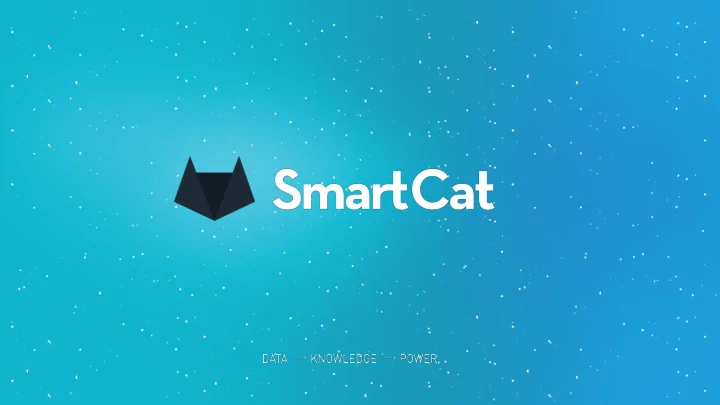

Challenges of Monitoring Distributed Systems May 2017 Nenad Bozic SmartCat @NenadBozicNs www.smartcat.io nenad.bozic@smartcat.io @SmartCat_io
Agenda ● Monitoring 101 ● Metric data stream and tools ● Log data stream and tools ● Combine metrics and logs for full control ● Alerting
Monitoring 101 • Monitoring domain consists of: ○ Metrics data stream ○ Log data stream ○ Alerting
Metrics Data Stream
Metric data stream • Easily forgotten and pushed aside when chasing deadlines • Metrics are indicators that everything is working within expected boundaries • Good dashboard has enough information (not too much, not too little) Distributed system -> many graphs to watch -> information overload trap
Metric data stream - decision • SAS solutions vs self-managed solutions • Paying solutions vs free solutions • Decision based on: ○ technical team skillset ○ level of control ○ security of data
Metric data stream - stack • Riemann as sink that handles events and sends them to Riemann server • InfluxDB as NoSQL store which is build for measurements • Grafana as visualization tool (flexible configurable graphs from many data sources)
Log Data Stream
Log data stream • Log monitoring on single machine requires skill and knowledge • Same challenges as with metrics (not too much, not too little) • Metrics are indicator that something happened and logs provide context (what happened) Distributed system -> many terminals open -> information overload trap
Log data stream - decision • SAS solutions vs self-managed solutions • Paying solutions and free solutions • Decision based on: ○ technical team skillset ○ level of control ○ security of your data
Log data stream - ELK stack • ELK (ElasticSearch, LogStash, Kibana) all open source • Filebeat is sending log messages from instances • Logstash can filter, manipulate and transform messages • ElasticSearch indexes log messages for easier searching • Kibana is visualization tool with filtering capabilities
Combine logs and metrics
Real world example • Provide reliable latency guarantee for 99.999% request • Whole infrastructure deployed on AWS • Lot of metrics transferred to metrics machine • We needed fine grained diagnostics for queries to database both on cluster and application level among other things
Combine logs and metrics • It is much easier to look at graphs than logs • Good metric coverage can pinpoint exact cause of problems • Usually we need log messages to bring the context • Grafana can combine InfluxDB (measurement data store) and ElasticSearch (log index)
Alerting
Alerting • Alerting is giving you freedom not to look at graphs • Someone else placed domain knowledge about alerts • Alerting must not be frequent since you will end up ignoring alerts Distributed system -> many alerts -> information overload trap
Sentinel - SMART Alerting • Have more context when anomaly happens • Have snapshot of the system at moment something happened • Be proactive, not reactive, let system predict cause of malfunction and prevent it instead of curing it
Sentinel - SMART Alerting
Sentinel - SMART Alerting
Conclusion
Conclusion • Have right amount of information, not too much, not too little • Having good selection of metrics and logs is iterative process • Do not end up fixing monitoring machine instead of fixing application code (especially in distributed world) • Be proactive, not reactive • Tailor metrics by your needs, build tools if there are not any that suite your use case
Links • Monitoring stack for distributed systems - SmartCat blog post • Distributed logging - SmartCat blog post • Metrics collection stack for distributed systems - SmartCat blog post • Monitoring machine ansible project (Riemann, Influx, Grafana, ELK) - SmartCat github project Twitter @NenadBozicNs
Q&A
Thank you Nenad Bozic SmartCat @NenadBozicNs www.smartcat.io @SmartCat_io
Recommend
More recommend